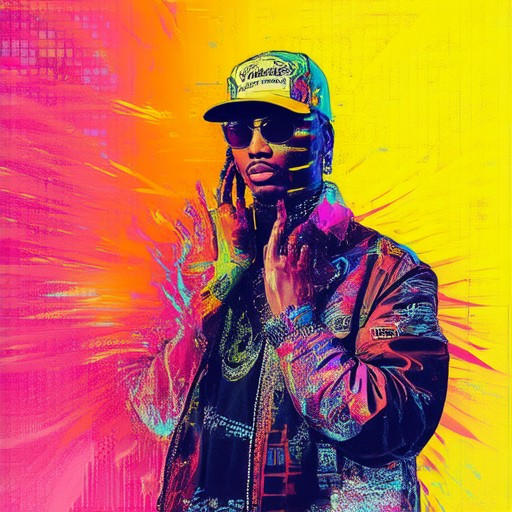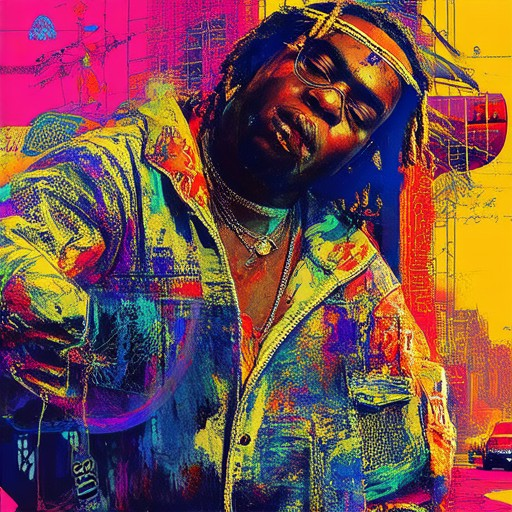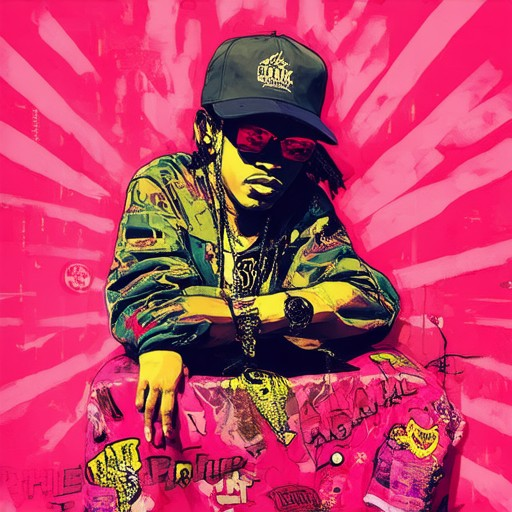Delving into the rich tapestry of hip hop culture offers a profound exploration of its origins, significance, and far-reaching impact. This dynamic cultural phenomenon, born from the streets of New York City, has evolved into a global movement that transcends music, embracing art, fashion, and social commentary. Rooted in the struggles and triumphs of African-American communities, hip hop culture has become a powerful lens through which we view identity, creativity, and resilience. From its early days as a means of storytelling and community building to its current status as a cultural powerhouse, hip hop continues to shape trends, influence art forms, and spark conversations about societal issues. In this commentary, we’ll unpack the core elements of hip hop culture, its historical journey, and its profound influence on modern society. Whether you’re a seasoned fan or new to the scene, this exploration will provide fresh insights into the world of hip hop culture.

What is Hip Hop Culture?
Hip Hop culture is a vibrant and dynamic blend of art, music, fashion, and social expression that originated in African American communities in the Bronx, New York City during the late 1960s and early 1970s. It has evolved into a global phenomenon, influencing various aspects of modern society.
- The Four Pillars of Hip Hop:
- Deejaying (Turntabling): The art of spinning records to create beats and rhythms, laying the foundation for hip hop music.
- Rapping (MCing): The lyrical component where MCs deliver rhymes and stories over beats, often addressing social issues, personal experiences, and cultural themes.
- Graffiti Art: A visual form of self-expression through spray-painting and murals that often feature bold, stylized letters and imagery.
- B-Boying (Breakdancing): The physical aspect, characterized by intricate moves and routines performed to the beat of the music.
Hip Hop culture has had a profound impact on music, fashion, film, and technology. It has inspired countless artists, filmmakers, and entrepreneurs, while also serving as a medium for social commentary and empowerment. From its roots in the Bronx to its global influence today, Hip Hop continues to evolve, embracing new technologies and reaching new audiences worldwide.
What Are the Three Pillars of Hip Hop Culture?
Hip Hop culture is rooted in a rich tapestry of artistic expression, social commentary, and communal experiences. While there are many elements that define this vibrant subculture, three core pillars stand out as foundational to its identity:
- MCing (Rapping)
At the heart of Hip Hop lies the art of MCing, where emcees use their voices to tell stories, drop rhymes, and inspire audiences. Rappers draw from personal experiences, social issues, and cultural themes to create intricate narratives. Their delivery, often characterized by fluidity, rhythm, and wordplay, has made MCing one of the most iconic aspects of Hip Hop. - DJing (Deejaying)
The turntable became the DJ’s canvas, allowing them to manipulate records and create beats on-the-fly. DJing is not just about playing tracks; it’s about blending genres, scratching records, and building rhythms that resonate with the crowd. The DJ’s role is crucial in setting the pace, mood, and energy of a Hip Hop event. - Graffiti Art
Graffiti, or “writing,” is another cornerstone of Hip Hop culture. Artists use spray paint, markers, and brushes to create visually striking murals that often reflect the social and political issues of their communities. Graffiti has evolved from illegal street art to a celebrated form of urban expression, with styles ranging from traditional bubble letters to intricate, 3D effects.
These three pillars—MCing, DJing, and graffiti—form the cultural foundation of Hip Hop, serving as a bridge between art, music, and community. Each element has evolved over time, but their collective impact remains undeniable. Learn more about the origins of Hip Hop .

What Are the 9 Elements of Hip Hop Culture?
The hip hop culture encompasses a diverse array of elements that have defined its identity over the years. Below are the nine core components that make up this vibrant and influential subculture:
-
1. Break Dancing
Break dancing is one of the most visually striking elements of hip hop. It involves intricate footwork, spins, and freezes that tell stories through movement. This art form has evolved into various styles, each with its own unique flair.
-
2. Emceeing
Emceeing, or MCing, is the heart of hip hop. Rappers use their voice, lyrics, and delivery to convey stories, emotions, and social commentary. Their words often reflect the struggles, triumphs, and experiences of everyday people.
-
3. Graffiti Art
Graffiti is a form of visual expression that has been a part of hip hop since its inception. It involves creating murals and tags that often serve as both art and statements, reflecting the culture’s rebellious spirit and individuality.
-
4. DJing
DJing is the backbone of hip hop parties and events. DJs use turntables, mixers, and scratch techniques to create beats and mixes that set the rhythm for rappers and dancers. Their role is essential in preserving the cultural heritage.
-
5. Beatboxing
Beatboxing is a rhythmic technique where artists create music using only their voice and body movements. It showcases exceptional timing, rhythm, and creativity, often serving as a precursor to modern hip hop production.
-
6. Street Fashion
Streetwear is a significant part of hip hop culture, reflecting the style and identity of individuals within the community. It includes iconic clothing items like hoodies, sneakers, and accessories that have become synonymous with the culture.
-
7. Language
Hip hop language includes slang, dialects, and phrases that have evolved from the African American community. It’s a unique way of speaking that has influenced pop culture and communication patterns worldwide.
-
8. Knowledge
Hip hop culture values knowledge and learning. From understanding the roots of the culture to exploring various subjects, this element emphasizes the importance of education and intellectual growth within the community.
-
9. Entrepreneurship
Entrepreneurship is a cornerstone of hip hop culture. Many artists and influencers have built successful businesses, from record labels to clothing brands, showcasing the entrepreneurial spirit and self-determination inherent in the culture.

What Were the 4 Key Features of Hip Hop Culture?
The Four Pillars of Hip Hop culture are MCing, DJing, Graffiti Art, and Breakdancing. These elements have played pivotal roles in shaping the identity and evolution of Hip Hop since its emergence in the late 1960s.
1. MCing
MCing, short for Master of Ceremonies, is the verbal delivery of raps, often accompanied by beats. MCs use their lyrical skills to tell stories, express emotions, and showcase their flow. Over time, MCing has evolved into various styles, including freestyling, storytelling, and battle rhyming.
2. DJing
DJing involves the creation and manipulation of beats using turntables and samplers. DJs layer samples, loops, and live performances to craft unique soundscapes. This artform has been central to Hip Hop’s development, providing the rhythmic foundation for MCs to rap over.
3. Graffiti Art
Graffiti, or aerosol painting, is a visual expression of Hip Hop culture. Artists use spray paint to create murals and tags, often depicting iconic imagery like the Bronx’s letters or portraits of influential figures. Graffiti has become a global phenomenon and a key part of Hip Hop’s identity.
4. Breakdancing
Breakdancing originated as a street dance style that combined acrobatics with rhythm. Dancers perform moves like headspins, footwork, and power moves to the beat. Breakdancing has evolved into various forms, from freestyle to choreographed routines, and remains a staple at Hip Hop events.
These four elements work together to create a vibrant and dynamic culture that continues to influence music, art, fashion, and social expression worldwide.
What Are the 4 Pillars of Hip-Hop?
Hip-hop culture is a vibrant and dynamic force that has influenced music, art, fashion, and society globally. To understand its essence, it’s helpful to break it down into its core components, often referred to as the “4 pillars” of hip-hop. These pillars are the foundation upon which the entire culture is built and have evolved over decades.
1. Beats
Beats are the rhythmic backbone of hip-hop, serving as the musical heartbeat that drives the culture. The art of creating beats involves sampling, producing, and manipulating sounds to create intricate rhythms. From the early days of block parties in the Bronx to modern studio productions, beats define the energy and vibe of a track. Producers like Kanye West and J Dilla have redefined how music is made, pushing the boundaries of what a beat can be.
2. Rhymes
Rhymes are the verbal glue that holds hip-hop together. MCs (Master of Ceremonies) use clever wordplay, storytelling, and intricate rhyme schemes to captivate audiences. Artists like Tupac and Nas have elevated the art of rap, turning it into a poetic form that reflects social issues, personal struggles, and cultural experiences. Rhymes are not just about the sound; they carry meaning, emotion, and a connection to the audience.
3. Style
Style is everywhere in hip-hop, from the way people dress to how they express themselves visually. Fashion has always been a big part of the culture, with iconic figures like Biggie Smalls and Jay-Z influencing trends. Graffiti art, led by legends like Keith Haring and Jean-Michel Basquiat, has become synonymous with hip-hop’s artistic expression. Style is about individuality, confidence, and the freedom to be yourself, whether on the streets or on stage.
4. Storytelling
Storytelling is at the heart of hip-hop, allowing artists to share their lives, struggles, and aspirations. Tracks like “Dear Mama” by Tupac and “Lose Yourself” by Eminem are powerful narratives that resonate deeply. DJs use storytelling through their sets, spinning tales of the culture’s history and shared experiences. This pillar highlights hip-hop’s ability to reflect reality, inspire hope, and bring communities together.
By understanding these four pillars—beats, rhymes, style, and storytelling—we can appreciate the richness of hip-hop culture and its global impact. It’s not just music; it’s a movement, a language, and a way of life that continues to evolve while staying true to its roots.

What Are the Five Rules of Hip-Hop?
The hip-hop culture is built on a foundation of five core principles that guide its evolution and expression. These principles are not just guidelines but essential rules that define the essence of hip-hop.
- Respect: Hip-hop began in the Bronx, New York City, and its roots are deeply tied to African American culture and urban experiences. Respecting the origins, contributors, and the communities that shaped hip-hop is crucial. From its inception, hip-hop has been a reflection of resilience, creativity, and unity, and it continues to honor those who paved the way.
- Creativity: At its core, hip-hop thrives on innovation. Whether it’s through lyrical prowess, beatmaking, or visual art, creativity drives the culture forward. Artists like Afrika Bambaataa, Kanye West, and Kendrick Lamar have redefined the genre by pushing boundaries and introducing fresh sounds.
- Teamwork: Hip-hop is a collaborative effort. Beats are often created by producers working alongside artists, and many tracks feature multiple contributors. This spirit of collaboration is evident in groups like The Roots and A Tribe Called Quest, who blend live instrumentation with MCs to create dynamic performances.
- Social Responsibility: Many hip-hop artists use their platforms to address social issues, from systemic inequality to personal struggles. Artists like Nas, J. Cole, and Eminem have used their voices to highlight challenges faced by marginalized communities, fostering empathy and awareness.
- Authenticity: Staying true to oneself is paramount in hip-hop. Authenticity ensures that the art remains genuine and relatable. While success and fame can alter lifestyles, many artists like Tupac Shakur and The Notorious B.I.G. maintained their authenticity, even as their reputations grew.
Hip-hop’s evolution is a testament to these principles. By embracing respect, creativity, teamwork, social responsibility, and authenticity, the genre continues to inspire generations worldwide. AbstractHipHop.com celebrates this rich heritage and explores its impact on contemporary culture.
[Continue reading on AbstractHipHop.com](https://abstracthiphop.com)





0 Comments